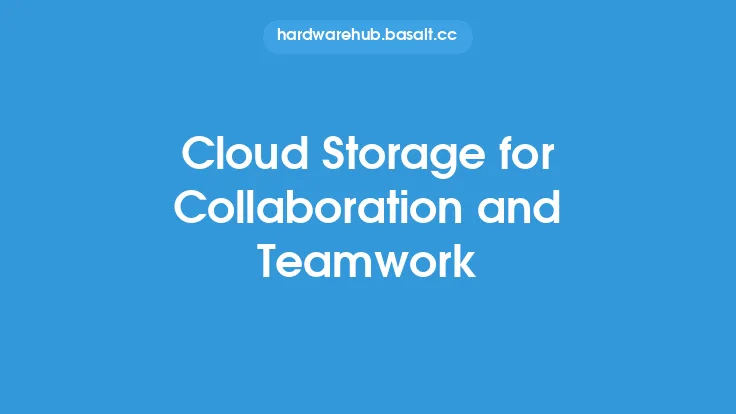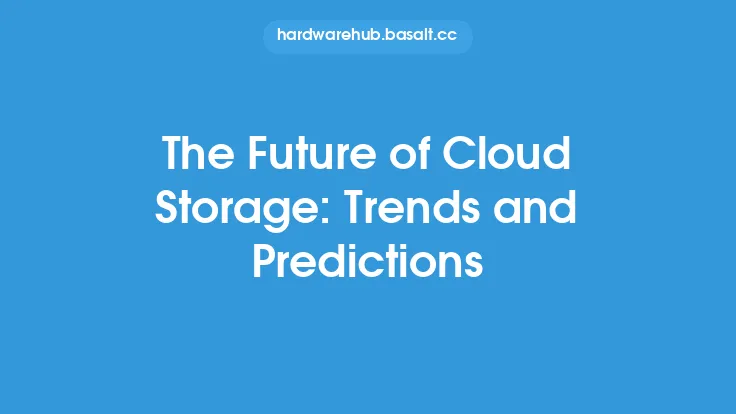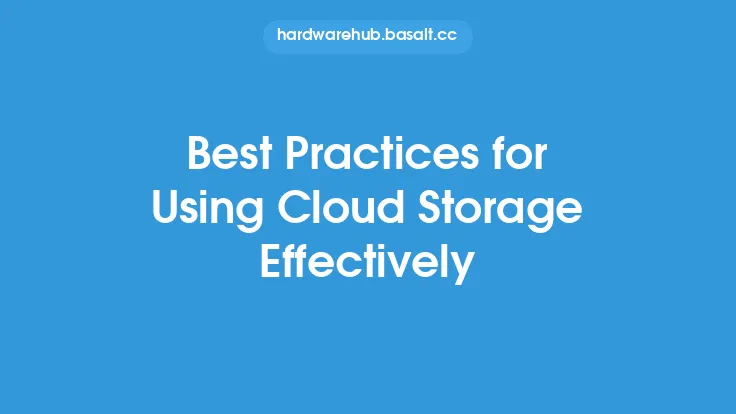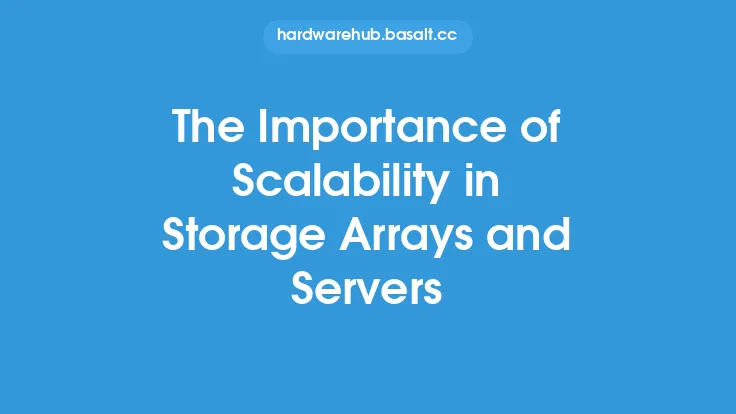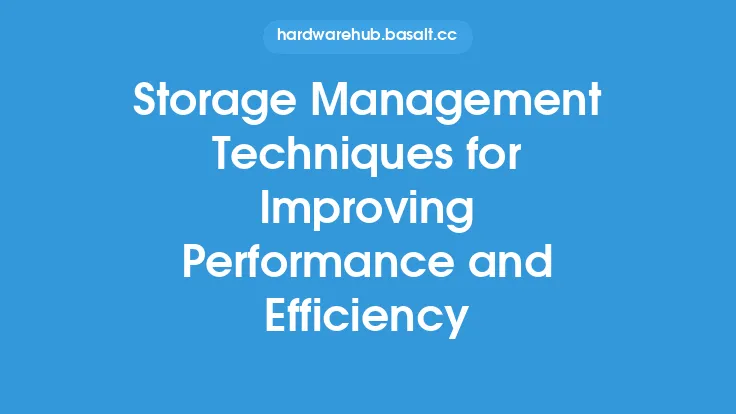Cloud storage has become an essential tool for individuals and businesses alike, providing a convenient and scalable way to store and access data from anywhere. However, with so many cloud storage providers and pricing models available, it can be challenging to understand the costs associated with cloud storage. In this article, we will delve into the world of cloud storage pricing models and costs, exploring the different types of pricing models, factors that affect costs, and strategies for optimizing cloud storage expenses.
Introduction to Cloud Storage Pricing Models
Cloud storage pricing models can be broadly categorized into several types, including pay-as-you-go, subscription-based, and tiered pricing. Pay-as-you-go models charge users based on the amount of storage used, while subscription-based models provide a fixed amount of storage for a monthly or annual fee. Tiered pricing models offer different levels of storage at varying price points, with discounts often applied for larger storage capacities. Understanding these pricing models is crucial for making informed decisions about cloud storage solutions.
Factors Affecting Cloud Storage Costs
Several factors can impact cloud storage costs, including storage capacity, data transfer, and data retrieval. Storage capacity refers to the amount of data stored in the cloud, with costs increasing as storage needs grow. Data transfer, on the other hand, refers to the amount of data moved into or out of the cloud, with costs often applied per gigabyte or terabyte. Data retrieval, or the process of accessing and downloading stored data, can also incur costs, particularly if large amounts of data are retrieved frequently. Additionally, factors such as data redundancy, encryption, and compliance requirements can also affect cloud storage costs.
Calculating Cloud Storage Costs
To calculate cloud storage costs, users must consider the total cost of ownership, including the cost of storage, data transfer, and data retrieval. This can be done by estimating the total amount of storage needed, as well as the amount of data that will be transferred and retrieved. Users should also consider the cost of any additional features or services required, such as data encryption or compliance support. By calculating the total cost of ownership, users can make informed decisions about cloud storage solutions and avoid unexpected costs.
Types of Cloud Storage Pricing Models
There are several types of cloud storage pricing models available, each with its own advantages and disadvantages. Pay-as-you-go models, such as those offered by Amazon S3, charge users based on the amount of storage used, with costs applied per gigabyte or terabyte. Subscription-based models, such as those offered by Microsoft OneDrive, provide a fixed amount of storage for a monthly or annual fee. Tiered pricing models, such as those offered by Google Cloud Storage, offer different levels of storage at varying price points, with discounts often applied for larger storage capacities.
Optimizing Cloud Storage Costs
To optimize cloud storage costs, users can implement several strategies, including data compression, data deduplication, and data archiving. Data compression reduces the size of stored data, resulting in lower storage costs. Data deduplication eliminates duplicate copies of data, reducing storage needs and costs. Data archiving involves moving infrequently accessed data to lower-cost storage tiers, reducing costs while still maintaining access to important data. Additionally, users can consider using cloud storage providers that offer discounts for long-term commitments or large storage capacities.
Cloud Storage Pricing Comparison
Comparing cloud storage pricing models can be challenging, particularly given the variety of providers and pricing models available. However, by considering factors such as storage capacity, data transfer, and data retrieval, users can make informed decisions about cloud storage solutions. For example, Amazon S3 charges $0.023 per gigabyte-month for standard storage, while Microsoft OneDrive charges $6.99 per month for 1 terabyte of storage. Google Cloud Storage, on the other hand, charges $0.026 per gigabyte-month for standard storage, with discounts applied for larger storage capacities.
Best Practices for Managing Cloud Storage Costs
To manage cloud storage costs effectively, users should implement several best practices, including monitoring storage usage, optimizing data storage, and negotiating with cloud storage providers. Monitoring storage usage helps users understand their storage needs and identify areas for cost optimization. Optimizing data storage involves implementing strategies such as data compression, data deduplication, and data archiving to reduce storage costs. Negotiating with cloud storage providers can also result in discounts or customized pricing models, particularly for large or long-term commitments.
Conclusion
Cloud storage pricing models and costs can be complex and challenging to understand, particularly given the variety of providers and pricing models available. However, by considering factors such as storage capacity, data transfer, and data retrieval, users can make informed decisions about cloud storage solutions. By implementing strategies such as data compression, data deduplication, and data archiving, users can optimize cloud storage costs and reduce expenses. Ultimately, understanding cloud storage pricing models and costs is essential for making the most of cloud storage solutions and achieving business or personal goals.
